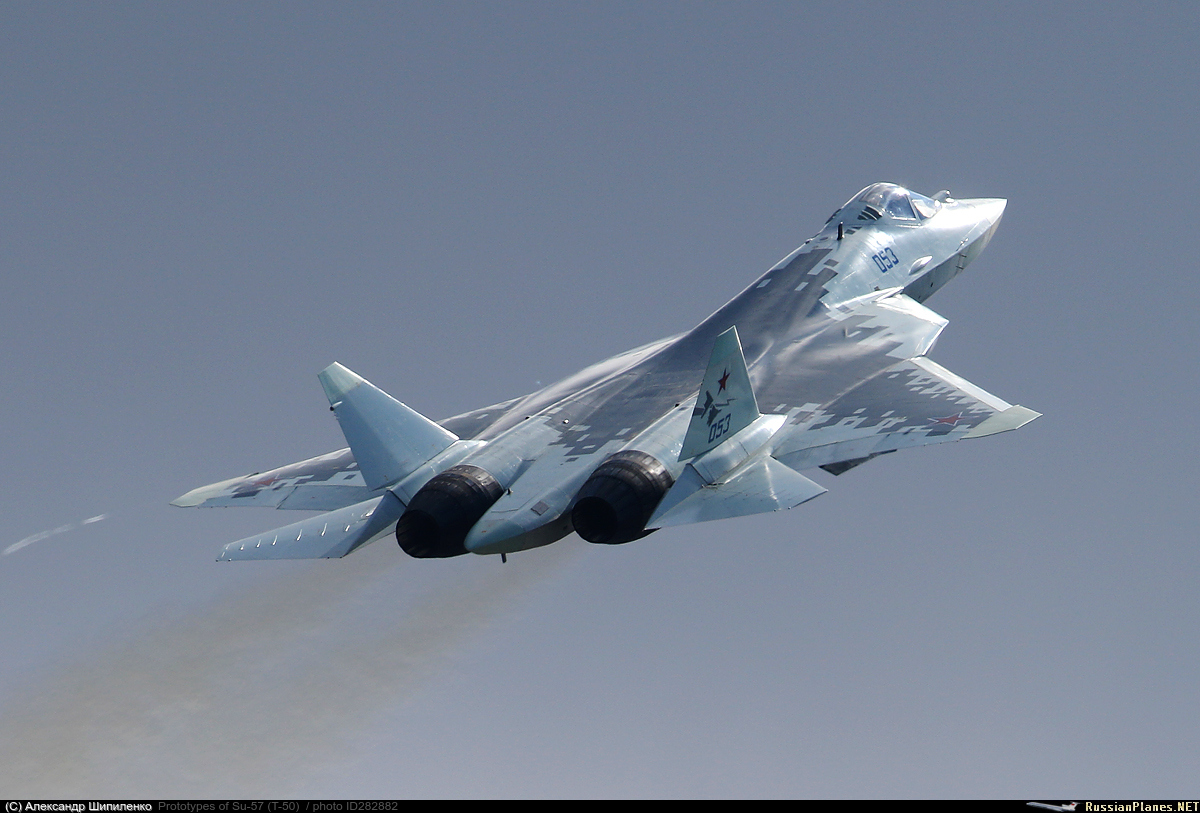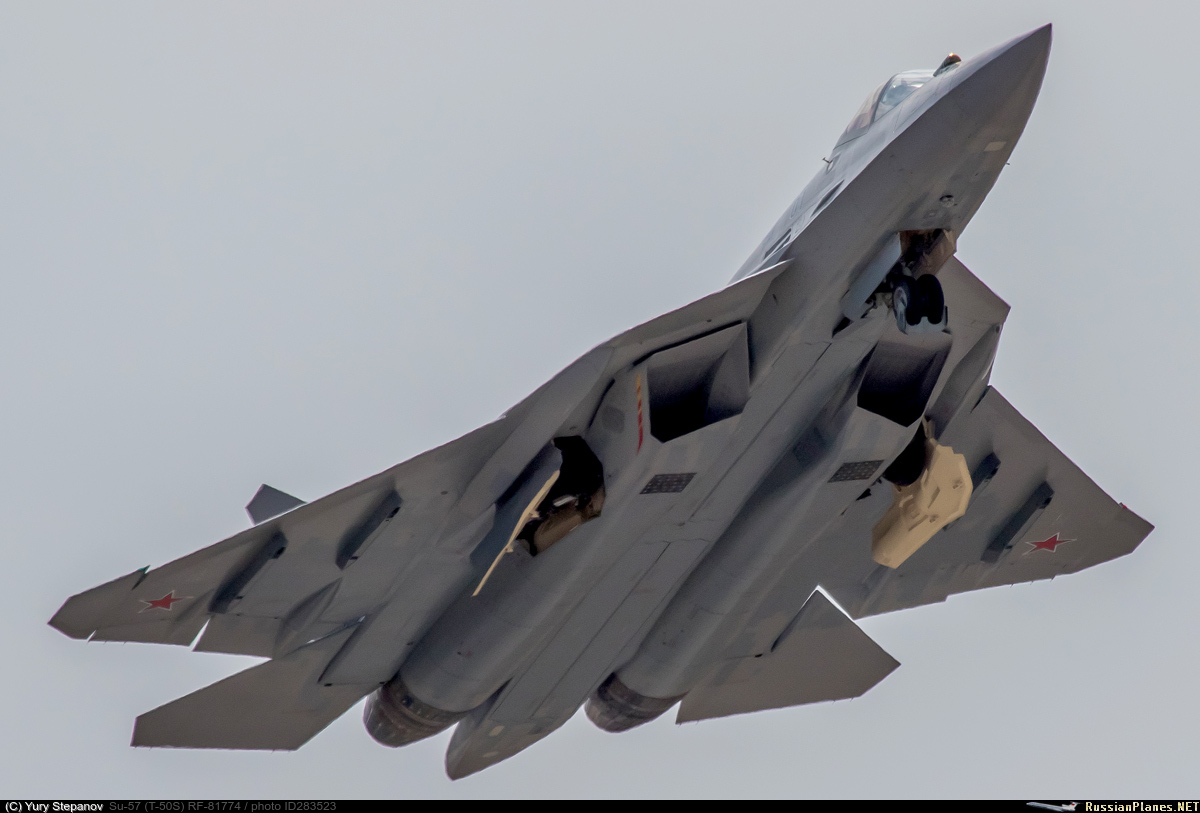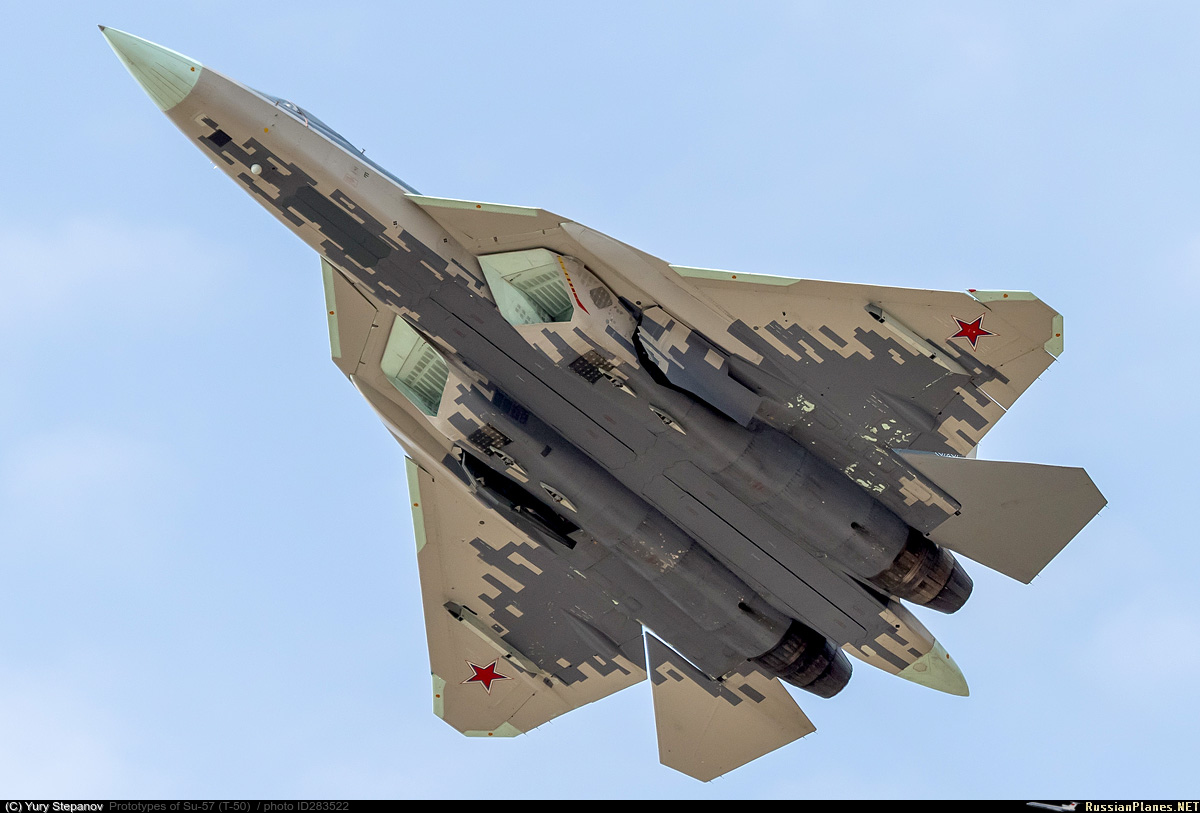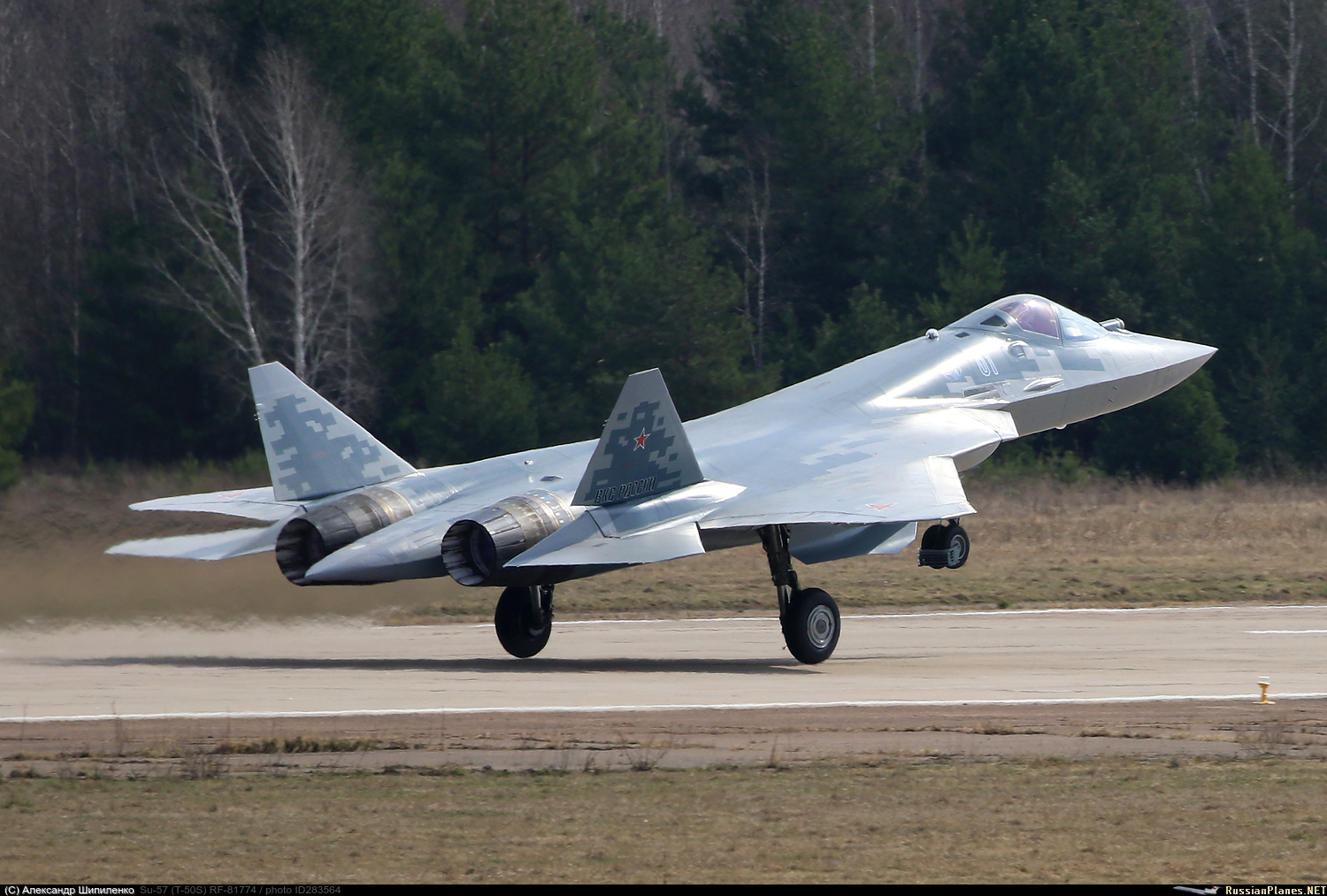limb wrote:How do you debunk the claim that the Su-57's wing mounted L band radars are only there for IFF? I constantly keep hearing claims that for an LDAR radar to be able to detect targets at meaningful ranges, it must have a very large antenna, and theese arguments cite the nebo as having a much larger antenna than similar xband ground based radars as proof of this. However the IFF claim doesnt make sense since IFF technology hasnt changed much and it would be a waste to put 2 entire Lband radars on just for IFF. I hear yet other claims that the wing mounted Lband radars to be for IFF, ground search as well as datalink disruption, but not detection of stealth targets.
So is it true that its possible for an Lband radar on the Su-57 to be supplied with enough power and have the size to detect detect stealth fighters at 300-400km? I'm guessing the physics of it are classified, but western electric engineers are basically claiming is physicially impossible.
Sorry for bringing this topic back up, but when I first found out that the Su-35S had AESA (that's what I like to call them more so than L-band whatever) radars mounted on the wing root flap, I jumped up in the air and smacked my head on the low ceiling but the excitement overcame the pain!

This was announced back in 2009 and the MAX show. I don't know how many of you members here take "Air Power Australia" as a reliable source or not, but much of what they mentioned pretty much debunks the claim you mention.
So off the Australian air Power source is some incredibly convincing material that these are in fact AESA (L-band) as well as IFF sensors.
LINK - http://www.ausairpower.net/APA-2009-06.html
Obviously this is on the Su-35 and I would probably be pretty correct to say that what is fitted on the Su-57 is even more advanced and developed.

Here's a small passage from that source if you don't feel like reading the whole thing since it's rather long but super informative and convincing:
The L-band AESA designed for embedding in the inboard leading edge of a fighter wing was perhaps the most interesting single disclosure from the MAKS 2009 event in August, 2009. Tikhomirov NIIP's marketing material for this product describes it as intended for the “Su-27 (30) and Su-35 family of aircraft” thus presenting it as a component for new build aircraft and retrofit to existing fleet aircraft. Depicted the second Su-35S prototype B/N 902 (KnAAPO image),
Abstract
Tikhomirov NIIP in Moscow are developing an L-band AESA radar system intended for embedding in the leading edges of fighter wings. A demonstrator of the L-band AESA subsystem was publicly displayed at MAKS2009.
This paper analyses the operational potential of this design, and performs a range of performance estimates based on manufacturer disclosures and known design features.
The design has clear potential to provide a genuine “shared multifunction aperture” with applications including:
Search, track and missile midcourse guidance against low signature aircraft.
Identification Friend Foe / Secondary Surveillance Radar.
Passive angle tracking and geolocation of JTIDS/MIDS/Link-16 emitters at long ranges.
Passive angle tracking and geolocation of L-band AEW&C/AWACS and surface based search radars at long ranges.
Passive angle tracking and geolocation of hostile (i.e. Western) IFF and SSR transponders at long ranges.
High power active jamming of JTIDS/MIDS/Link-16 emitters.
High power active jamming of satellite navigation receivers over large areas.
High power active jamming of L-band AEW&C/AWACS and surface based search radars at long ranges.
High power active jamming of guided munition command datalinks over large areas.
Performance modelling for a range of feasible configurations indicates the radar will deliver tactically credible search range performance.
The Tikhomirov NIIP L-band AESA is an important strategic development, and a technology which, once fully matured and deployed in useful numbers, will render narrowband stealth designs like the F-35 Joint Strike Fighter and some UAVs, highly vulnerable to Flanker variants equipped with such radars.If any Russian-speaking fellas could kindly translate the very short remarks inside the pics, that would be great! There's only two out of the posted batch that have any Russian description.




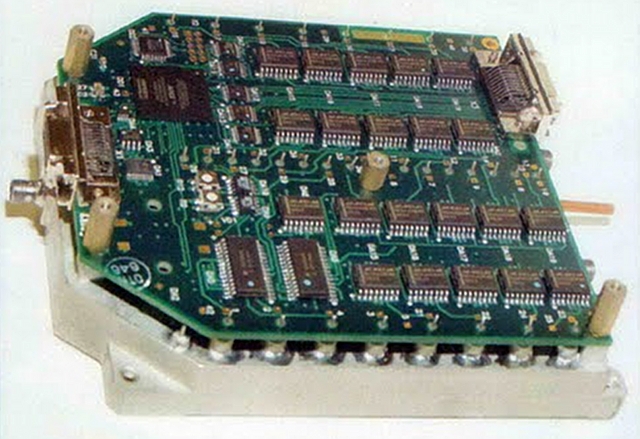
Oh and this translation please. They're both pretty short, right? Not asking much!

Thanks ion advance.

If all of this was in the Su-35 back during MAX 2009, one can only imagine the strides they've taken since for the development of the AESA winged radar L-Band!
BTW, this might be another reason why they make that silly claim is the F-35's IFF are in the same place. Not good to assume as we know what the word "ass u me" really means lol.



 thegopnik
thegopnik

